Our desire to clean up and save our environment continues to grow. One way we can do this is by increasing the use of sustainable products. The home improvement and construction industries practice this movement by using more sustainable building materials.
Pine is one of the most popular woods for many projects from toys to furniture to paneling. Knotty pine paneling is an excellent example used for walls, ceilings, and wainscoting. It is both sustainable and durable along with its beauty and usefulness.
What Is A Sustainable Product?
A sustainable product is made from renewable resources, minimizes waste, and uses minimal energy during its production and distribution. It also protects the environment and human health throughout its life cycle, from the extraction of raw materials until disposal.
Sustainable products are designed with society and the environment in mind and are economical throughout their life cycle. Examples of sustainable products in daily use include:
- Wood from trees that are grown on sustainable tree farms
- Furniture made with recycled or reclaimed wood
- Green building materials like low VOC-stains and recycled insulation
- Clothing made from eco-friendly or organic materials
- Electronics made with recycled materials and components
- Renewable energy sources such as wind power and solar
- Products and services that use natural resources responsibly
Businesses that are seeking newer ways to go green are performing a valuable service for us and our environment.
Knotty Pine Paneling Fits The Definition
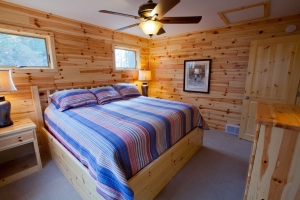 Knotty pine paneling fits the definition of a sustainable product in several ways. Beside its affordability, it has this to offer:
Knotty pine paneling fits the definition of a sustainable product in several ways. Beside its affordability, it has this to offer:
- It is made from the wood of pine trees that are grown on federally-approved farms
- After harvesting a group of trees, more are planted in their place for future use
- Growing pine trees on tree farms prevents their disappearance like in much of Europe
- Tree farms are a planned and well-managed endeavor that helps assure a supply of wood for current use and future generations
- Producing knotty pine paneling releases little to no toxic gases into the environment
- Pine tree farms are influencing the growth of other species of tree farms
“The home improvement and construction industries practice this movement by using more sustainable building materials.”
How Knotty Pine Paneling Is Made
The creation process for knotty pine paneling is environmentally friendly in the U.S. It starts by cutting down a group of trees, removing their limbs, and transporting the logs to a sawmill. The mill continues the process by removing the bark and shaping the logs to a consistent diameter from end to end. Some mills cut the logs to length before shaping their diameters.
Next, the logs are milled into boards to the correct thickness, width, and length and planed smooth. They are milled to various sizes as advertised on the company’s website. Tongues and Grooves (T&G) are formed on the sides and ends of each piece of paneling for faster and easier installation. Knotty pine paneling is available in both unfinished and pre-finished conditions.
Benefits Of Sustainable Knotty Pine Paneling
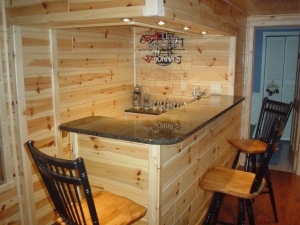 Modern knotty pine paneling is not your grandfather’s style of wall paneling. Today’s paneling boards are superior to old boards that were 12’ to 16’ long and had to be spliced on studs.
Modern knotty pine paneling is not your grandfather’s style of wall paneling. Today’s paneling boards are superior to old boards that were 12’ to 16’ long and had to be spliced on studs.
- The paneling is fast and easy to install
- Pieces can be end-butted between wall framing
- The tongue and groove/end-matching design creates strong joints
- This product is virtually a “no-waste” item
- There is less time spent measuring and sawing
- Sawed-off pieces can be used to start the next row
- Available in both unfinished and pre-finished boards
This type of paneling can be installed with simple tools and supplies including a miter saw, measuring tape, pencil, nail gun, nails, level, short block of wood, and a mallet. Homeowners with woodworking skills can do a good job of installing it and save a lot of money.
Uses For Knotty Pine Paneling
Knotty pine paneling is such a versatile product it can be used for many applications and not just for walls. Its characteristics such as strength and stability allow its use for:
| Art Projects | Backsplashes | Beverage Bars |
| Bookcases | Cabinets | Ceilings |
| Closet Linings | Craft Items | Doors (Interior) |
| Kitchen Islands | Pantry Linings | Shelving |
| Toy Chests | Walls – Accent | Walls – Traditional |
| Walls – Wainscoting | Workbench Tops |
Knotty pine wood is easy to work such as sawing, sanding, drilling, planing, and staining. It is a favorite wood for its lightweight and affordability compared to hardwoods such as oak, maple, hickory, and cherry.
Knotty pine paneling has been around a long time satisfying home and cabin owners. It can be laid out in many designs on walls and ceilings. Think about using knotty pine flooring and decking for its enduring qualities and price.


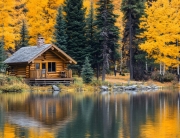
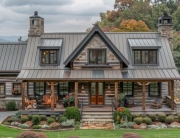
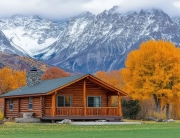
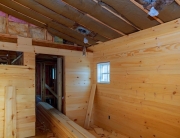
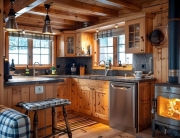
Recent Comments